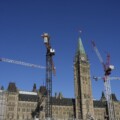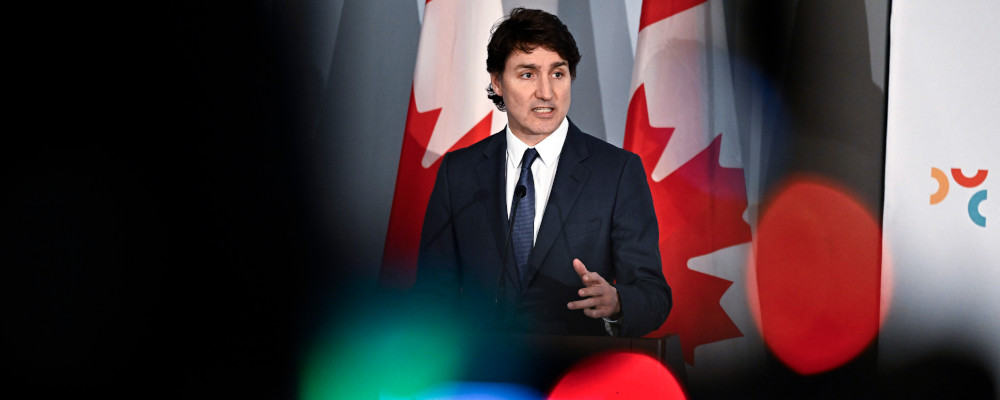Yesterday’s federal budget confirms the Trudeau government’s ongoing fiscal trajectory of higher program spending, more deficits and debt, and ultimately bigger government. A key difference from recent years however is that it also sets out significant new tax increases—including a higher capital gains tax rate—that begin to raise revenues to match the government’s higher levels of spending. This should be understood as a possible step towards a permanently larger government.
Let’s start with a short history. When the Trudeau government was first elected in 2015, federal program spending was roughly $250 billion (or about 12.5 percent of GDP) per year. Although the incoming government intended to increase spending on the margins based on “modest,” short-term deficits, its overarching fiscal policy message was mostly one of continuity with its predecessor. In fact, if anything, the 2015 Liberal Party platform lamented “the Harper legacy of chronic deficits” and promised to restore “fiscal prudence.”
Instead, the government’s first budget increased program spending by 6 percent and it never looked back. Program spending was up by 36 percent over just five years even before the pandemic hit. The government as a share of GDP gradually began to grow.

This trend of higher spending and bigger government has continued in the post-pandemic years and is reaffirmed in the new budget. This year’s projected program spending is now nearly double the level that it was ten years ago in the Harper government’s final year in office. It’s projected to hit more than $544 billion by 2028-29. Program spending as a share of GDP is now roughly three percentage points higher than it was when the Trudeau government was first elected and the highest it’s been in 30 years.
Recap: the Trudeau government came to office understating its plans to grow program spending and the size of government itself. It has subsequently gone about systematically increasing both mostly using deficit financing. Revenue as a share of GDP (particularly if one backs out the federal carbon tax which is supposed to be revenue neutral) has experienced minimal change.
Two recent developments however have seemingly shifted the Trudeau government’s deficit-financed plan to grow the size of the federal government. The first is the increase in its borrowing costs. In a higher-interest rate world, it’s simply more expensive to increase the size of government without taxpayers paying for it. It’s notable for instance that annual public debt charges have more than doubled since the government took office and are now the equivalent of total GST revenues.
The second is that the government and its proponents have become more straightforward about the case for bigger government. Perhaps liberated by their poor election prospects, they’ve abandoned old euphemistic arguments in favour of the decidedly progressive case that government “got too small” following the global financial crisis and the Trudeau government’s legacy is to right-size it.
The budget’s tax increases—including nearly $20 billion over five years from the capital gains tax hike alone—are a manifestation of this new political economy reality. They should be understood as a first (but hardly last) step to backfill Ottawa’s large-scale spending growth over the past near-decade.

It reflects the inverse of the common notion that tax-cutting conservatives—particularly in the U.S.—have pursued a fiscal policy strategy to “starve the beast” by cutting taxes to such a level that there eventually becomes no choice but to cut the size of government to bring it in line with tax revenues.
The Trudeau government has effectively sought the opposite strategy—what one might call “gorge the beast.” It has driven up government spending so high using deficit financing that it’s now saying we need to raise taxes in order to pay for its higher public expenditures.
One consequence is that it potentially sets up a starker set of political choices than we’ve had in the recent past. Cheap borrowing costs had enabled the Trudeau government to both promise more spending and low taxes. Canadians were effectively able to get big government for a discount.
Rising borrowing costs and the government’s own progressivism have begun to bring an end to that fiscal bargain. Taxes will eventually have to increase more broadly to sustain the Trudeau government’s inexorable spending ambitions. Canadians will ultimately have to decide if it’s worth it.
It ought to create a clear choice in the next election: did the government indeed get “too small,” and, if so, are Canadians prepared to pay for it to get bigger?
Recommended for You

‘Look around, this city is in decline’: Why Toronto is failing

David Eby is just the tip of the opposition iceberg in the way of Alberta’s pipeline proposal

Why Travis Dhanraj may be a false conservative idol

Canada, the duct-tape nation




